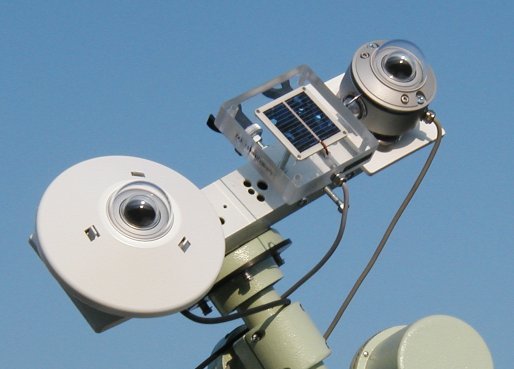
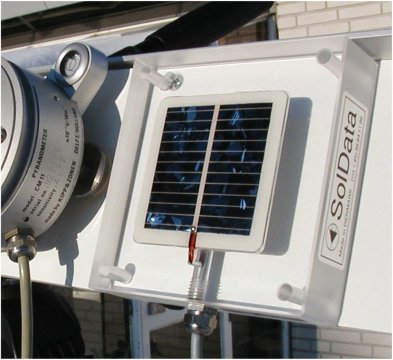

|

|
TYPICAL CALIBRATION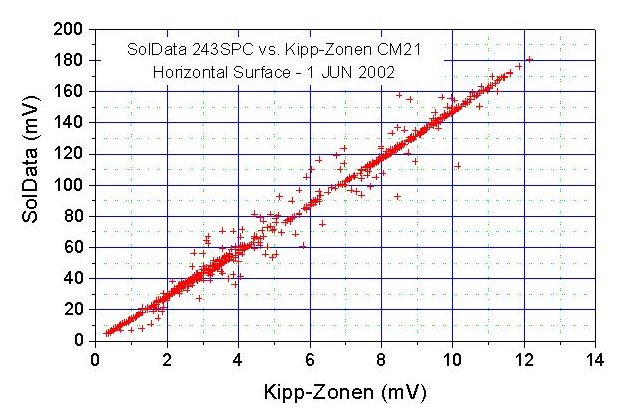 Typical calibration results. The SolData pyranometer reacts instantaneously to changes in irradiance, while the thermopile instrument has a response time of several seconds, so data collected during cloud passages deviate from the straight line. |
||||||||||||||||
DAILY SOLAR IRRADIANCE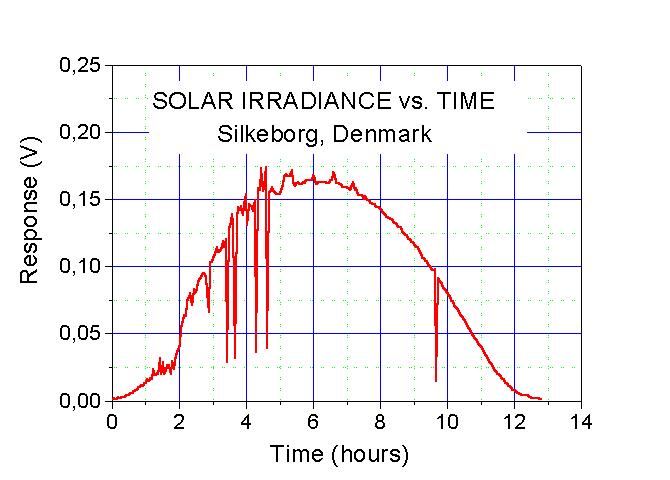 A SolData pyranometer will typically yield results like the data displayed here for a clear spring day in Denmark (56 N). The area under the curve corresponds to the total daily global solar energy e.g. measured in kWh per square meter. |
||||||||||||||||
|
The price of a photovoltaic instrument is about 10-20% of the price of a thermopile instrument. The high output signal makes is easy to collect data without amplification. Signal conditioning units are available if another voltage range is desired. |
TEMPERATURE COMPENSATION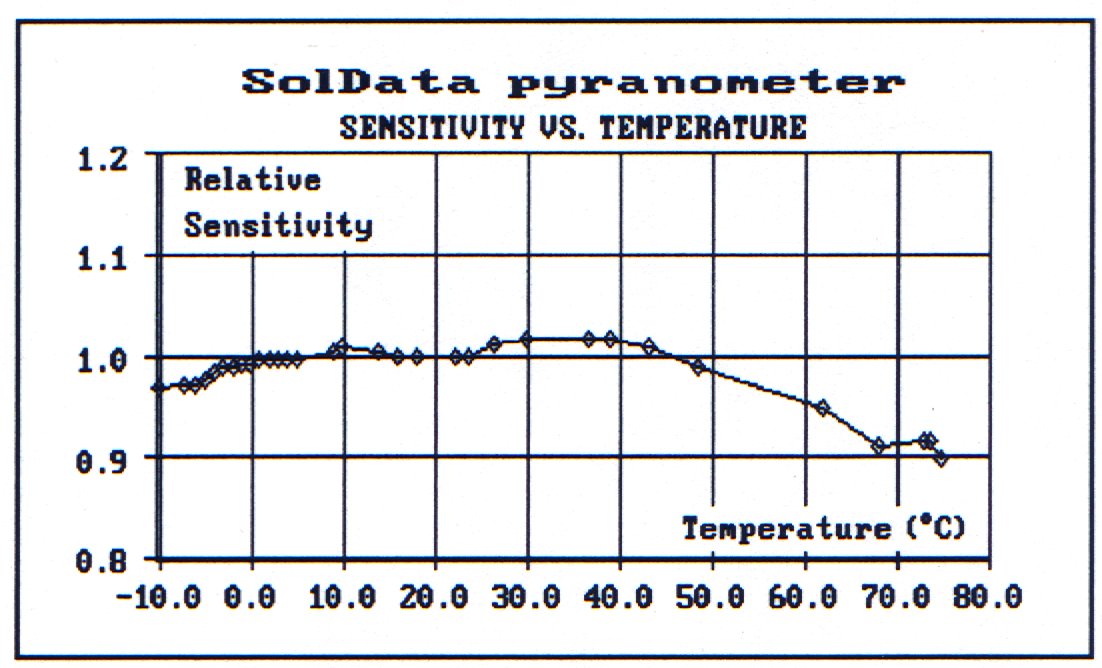 A SolData pyranometer is temperature compensated to within about +/-1% from -5 0C to 50 0C. Temperature compensation is achieved by means of a selected thermistor (NTC resistor)-shunt resistor combination. |
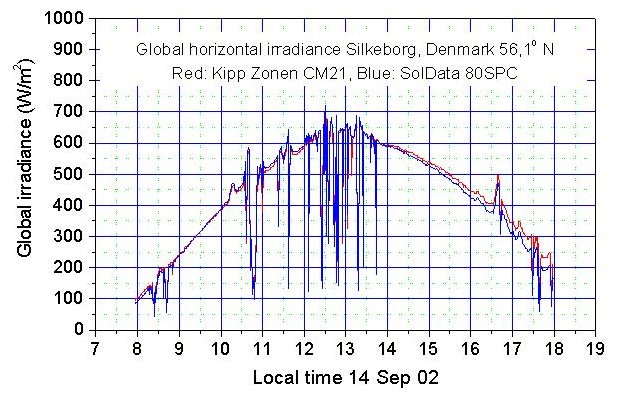 Measurements of global irradiance on a horizonal surface using a SolData 80SPC and a Kipp-Zonen. To avoid the deviation visible in the afternoon, it is important that the receiving surfaces of the instruments be perfectly parallel. Any deviation becomes very apparent at high angles of incidence. |
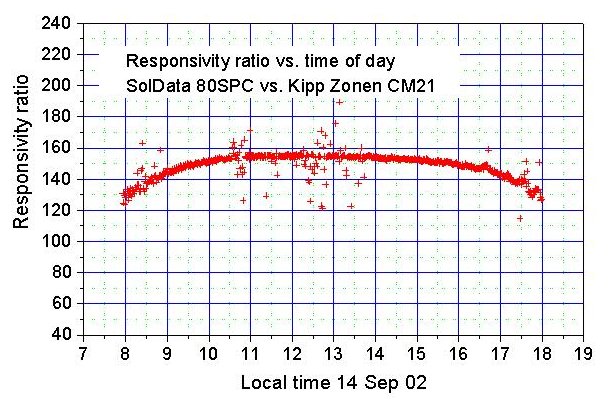 Responsivity variations are apparent in the early morning and late afternoon hours due to the high angle of incidence of the direct beam radiation. The error due to spectral shift in the direct beam toward the red due to Rayleigh scattering at high air mass values enhances the silicon detector sensitivity, while the cosine response deviation is of the opposite sign. These two errors tend to cancel. The remaining deviation is usually insignificant, because the radiation levels early and late in the day are small. |
| Kipp-Zonen: 4,307 kWh/m2 |
| SolData 80spc: 4,232 kWh/m2 |
| Deviation: -1,74% |